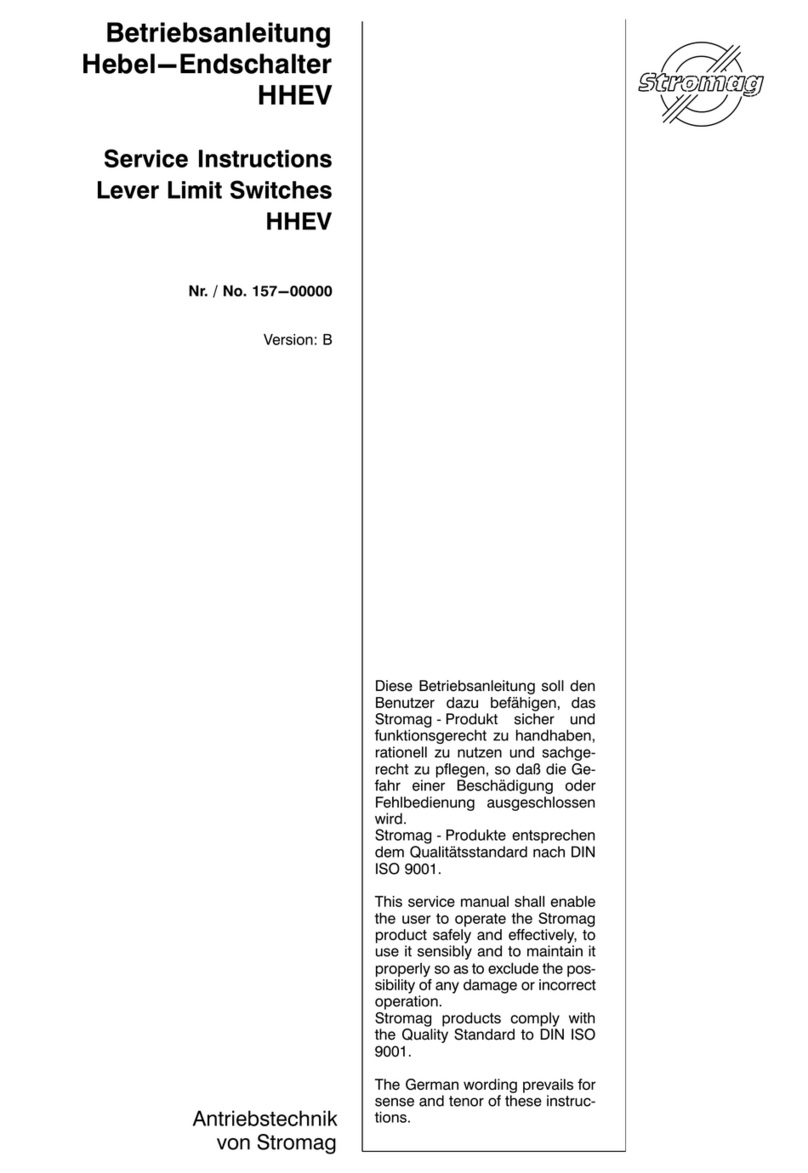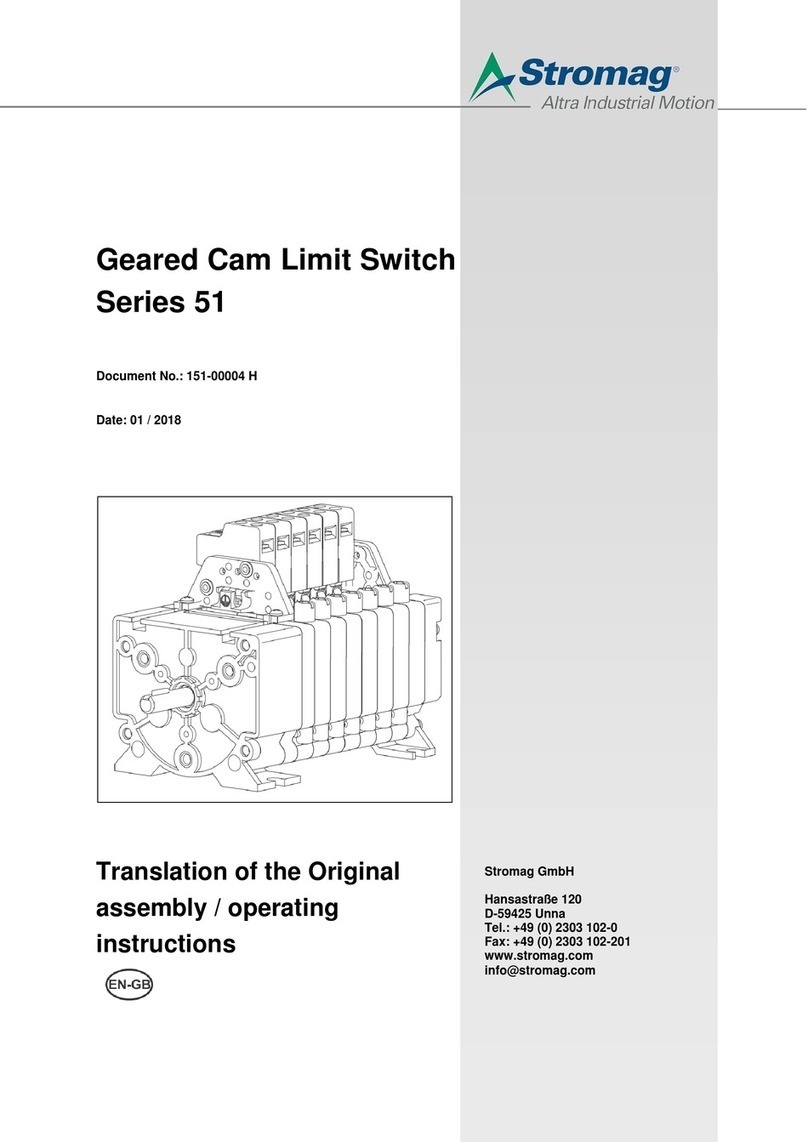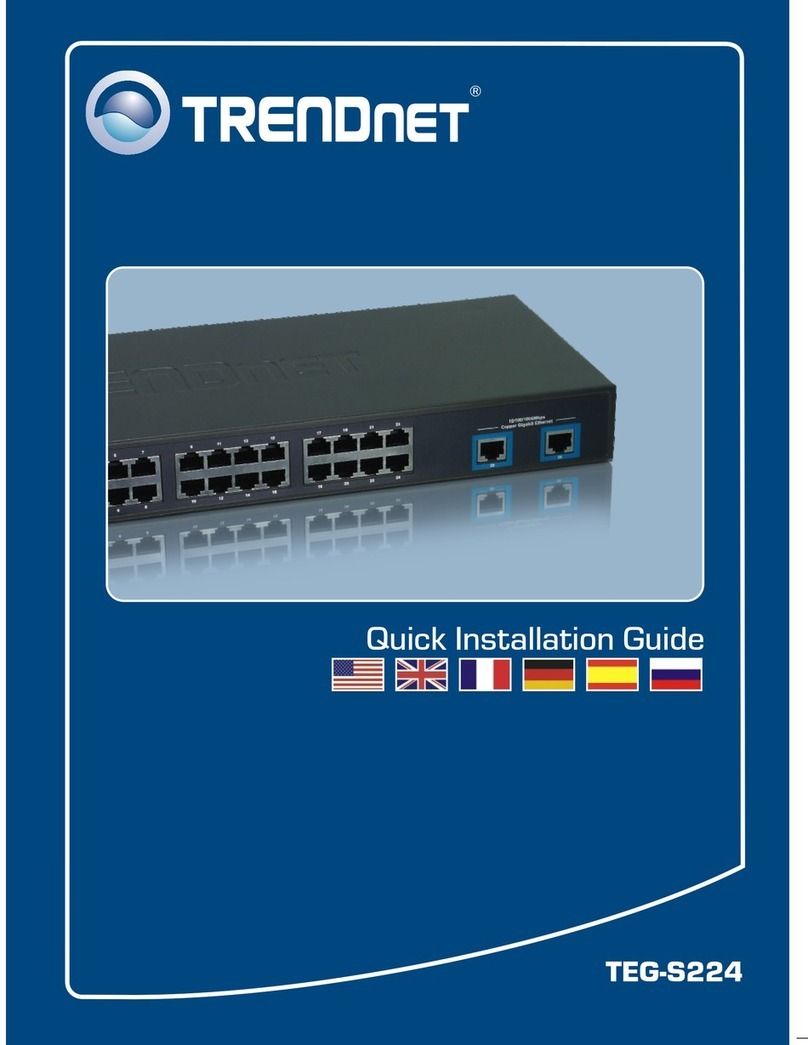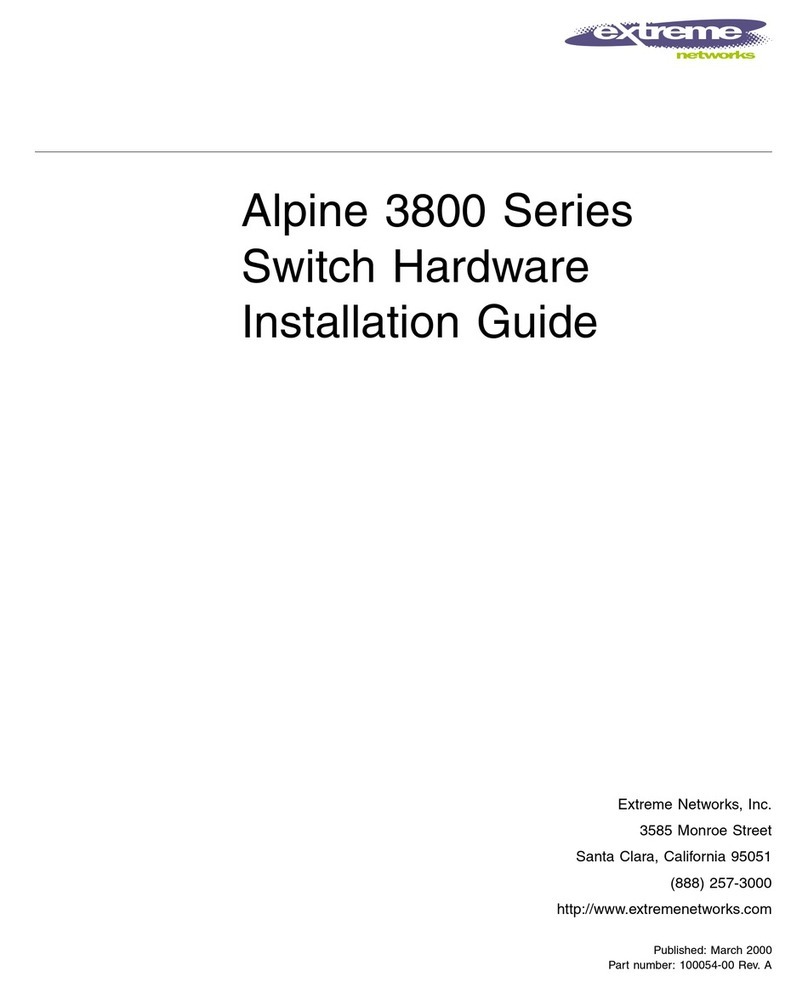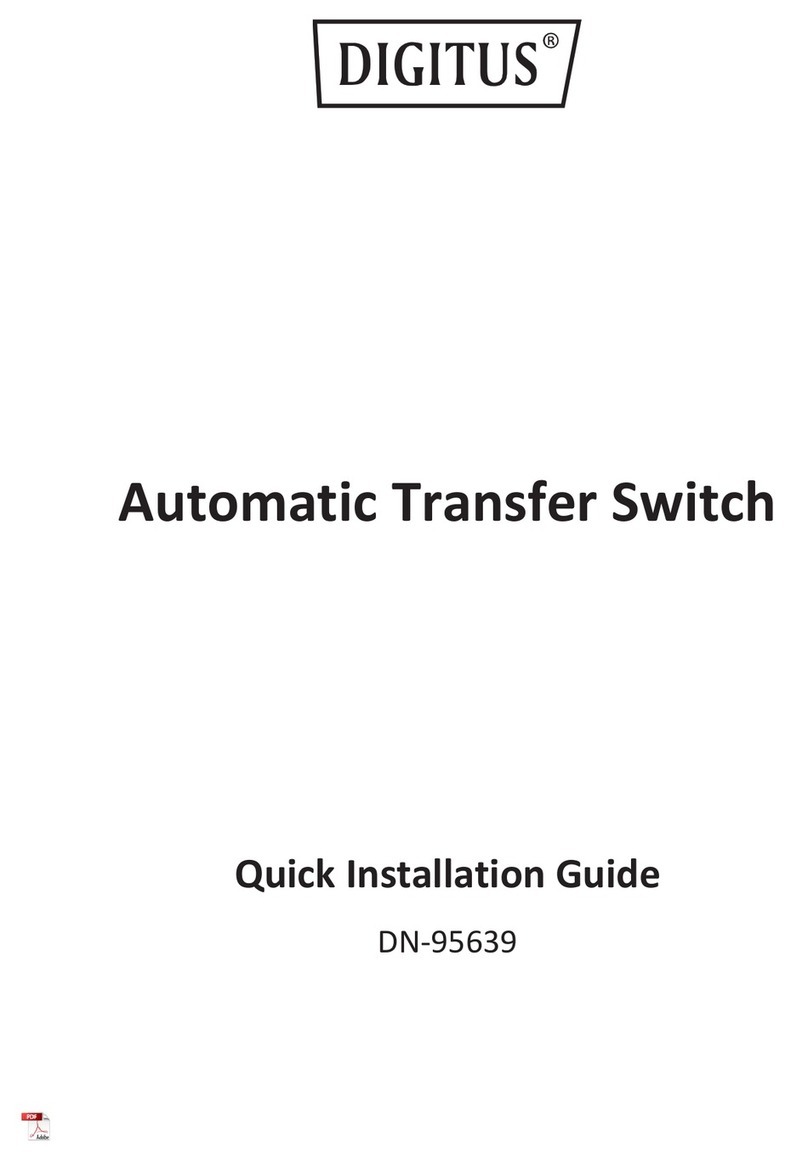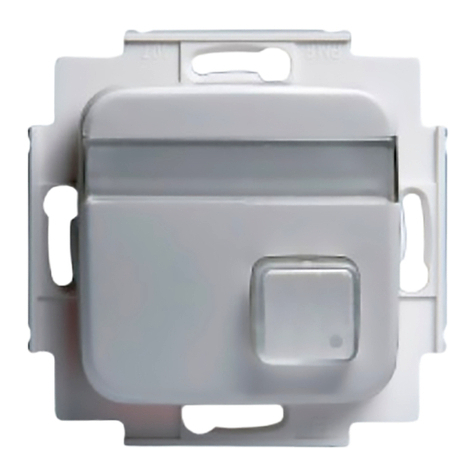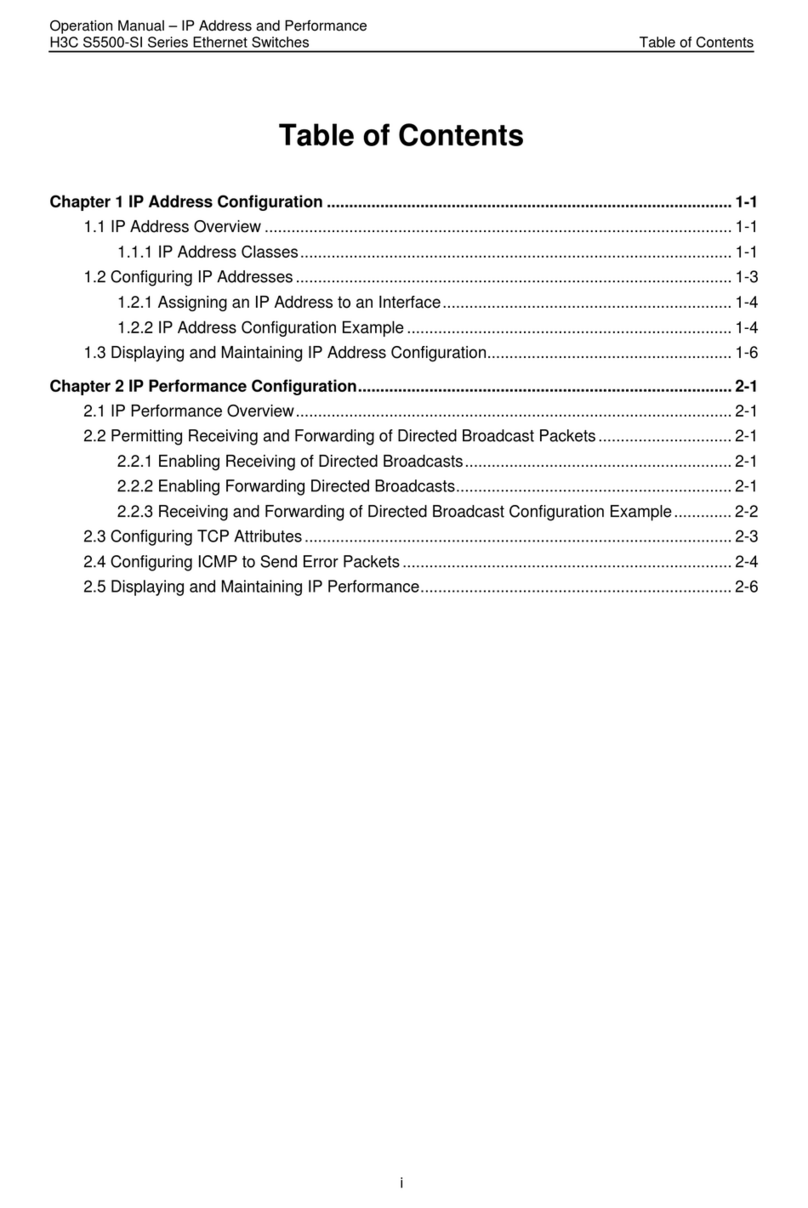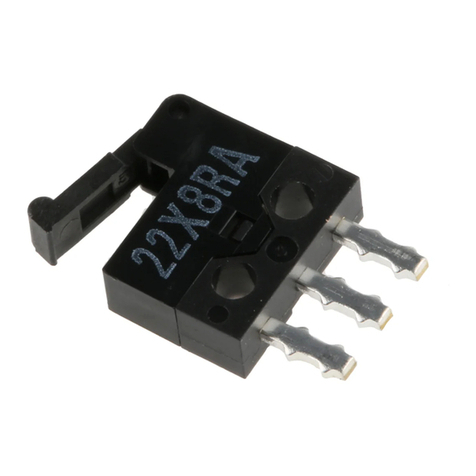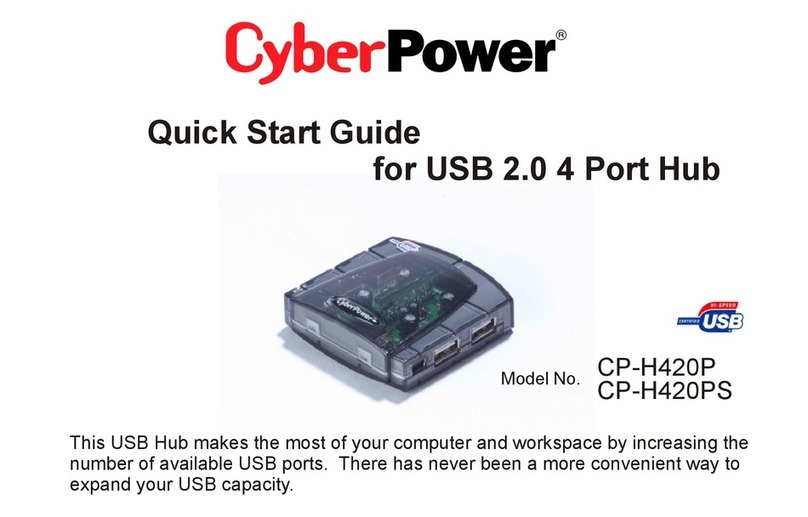Stromag HGE Series Service manual

Gear limit switch
Type series HGE
Document No.: 152-00000 F
Date: 10/2017
EKM-0119
Mounting/operating instructions
EN-GB
Stromag GmbH
Hansastraße 120
D-59425 Unna
Tel.: +49 (0) 2303 102-0
Fax: +49 (0) 2303 102-201
www.stromag.com

Contents
1 Introduction................................................................................................................................1
1.1 About this documentation........................................................................................................................... 1
1.1.1 Target group............................................................................................................................................ 1
1.1.2 Use/storage............................................................................................................................................. 1
1.2 Using the documentation correctly............................................................................................................. 2
1.2.1 Text formats.............................................................................................................................................2
1.2.2 Definition of terms....................................................................................................................................2
1.3 Warranty and liability.................................................................................................................................. 3
1.3.1 Guarantee................................................................................................................................................3
1.3.2 Copyright................................................................................................................................................. 3
2 For your safety...........................................................................................................................3
2.1 Safety concept of the documentation......................................................................................................... 3
2.2 Required personnel qualifications...............................................................................................................4
2.3 Intended use...............................................................................................................................................4
2.3.1 Application limits......................................................................................................................................4
2.3.2 Approvals.................................................................................................................................................4
2.4 Non-intended use....................................................................................................................................... 4
2.5 EC Declaration of Conformity..................................................................................................................... 4
2.5.1 Standards applied....................................................................................................................................5
2.6 Possible residual risks................................................................................................................................ 5
2.6.1 Mechanical dangers.................................................................................................................................5
2.6.2 Thermal dangers......................................................................................................................................5
2.6.3 Electrical danger......................................................................................................................................5
2.7 Safety symbols/pictograms in the documentation...................................................................................... 5
2.7.1 Warning symbols..................................................................................................................................... 5
2.7.2 Hazard classifications..............................................................................................................................5
2.7.3 Mandatory symbols..................................................................................................................................6
2.7.4 Note......................................................................................................................................................... 6
2.7.5 Environmental protection/recycling..........................................................................................................6
2.8 GTES safety devices.................................................................................................................................. 6
2.9 Safety symbols/pictograms on the GTES................................................................................................... 7
2.10 Wear personal protective equipment..........................................................................................................7
2.11 Basic responsibilities of the operator and personnel.................................................................................. 7
2.12 Safe handling of rotating components........................................................................................................ 7
2.13 Safe handling with hot surfaces..................................................................................................................7
2.14 Safe handling with electrical hazards......................................................................................................... 7
2.14.1 Responsibility of the operator.................................................................................................................. 8
2.14.2 Applying the five safety rules...................................................................................................................8
2.14.3 IP protection type and class.....................................................................................................................8
2.14.4 Electromagnetic compatibility.................................................................................................................. 8
2.15 Environmental protection............................................................................................................................8
3 Transport and storage.............................................................................................................. 9
3.1 Transport.................................................................................................................................................... 9
3.1.1 Unpacking................................................................................................................................................9
3.2 Scope of delivery........................................................................................................................................ 9
3.2.1 Pre-mounting condition............................................................................................................................9
3.3 Storage..................................................................................................................................................... 10
4 Technical specifications......................................................................................................... 10
4.1 Product data............................................................................................................................................. 10
4.1.1 Dimensions............................................................................................................................................10
4.1.2 Mechanical specifications......................................................................................................................10
4.1.3 General information............................................................................................................................... 13
4.1.4 Specific electrical values and position of the contact.............................................................................13
4.1.5 Contact positions................................................................................................................................... 16
II Mounting/operating instructions Gear limit switch Type series HGE • No. 152-00000 F • 10/2017

4.1.6 Type code..............................................................................................................................................17
4.2 Dimensional drawing................................................................................................................................ 18
4.3 Marking on the product.............................................................................................................................18
5 Construction and function......................................................................................................19
5.1 Switch sizes..............................................................................................................................................19
5.2 Component designations..........................................................................................................................20
5.3 Design, task and function of the assembly groups................................................................................... 20
5.3.1 Electrical connections............................................................................................................................21
5.3.2 Mounting position...................................................................................................................................21
5.3.3 Drive flange............................................................................................................................................22
5.4 Optional equipment available................................................................................................................... 22
5.4.1 Design with additional potentiometer.....................................................................................................22
5.4.2 Adjustment of the potentiometer with drive via a torsionally-stiff coupling.............................................23
5.4.3 Adjustment of the potentiometer when the drive is over gear wheels................................................... 23
5.4.4 Design with heating resistor...................................................................................................................24
6 Assembly..................................................................................................................................25
6.1 Special safety guidelines.......................................................................................................................... 25
6.2 Conditions for assembly and fixing...........................................................................................................25
6.2.1 Special tools.......................................................................................................................................... 25
6.2.2 Assembly precision................................................................................................................................25
6.2.3 Tightening torques.................................................................................................................................26
6.2.4 Requirements for the connecting components...................................................................................... 26
6.3 Assembly mechanics................................................................................................................................26
6.3.1 Assembly of the housing (design without flange).................................................................................. 26
6.3.2 Assembly of the housing (design with flange)....................................................................................... 27
6.4 Electrical assembly...................................................................................................................................27
6.4.1 Insert the connection cable into the GTES............................................................................................ 28
6.4.2 Connect the contacts.............................................................................................................................28
6.4.3 Connect the heating...............................................................................................................................28
6.4.4 Connect the earth conductor................................................................................................................. 29
6.5 Connection diagrams................................................................................................................................29
6.5.1 Electrics................................................................................................................................................. 29
6.6 Switching point adjustment.......................................................................................................................29
6.6.1 Normal adjustment "V50".......................................................................................................................31
6.6.2 Fine adjustment “FV50”......................................................................................................................... 32
6.6.3 Double fine adjustment "DFV"............................................................................................................... 33
6.6.4 Normal adjustment "V70".......................................................................................................................34
6.6.5 Fine adjustment “FV70”......................................................................................................................... 34
6.6.6 Block adjustment "BV"........................................................................................................................... 35
6.6.7 Block adjustment "BFV".........................................................................................................................36
6.7 Mount the cover........................................................................................................................................37
6.8 Correct disposal/recycling of operating and auxiliary materials................................................................37
7 Operation..................................................................................................................................37
7.1 Special safety guidelines.......................................................................................................................... 37
7.2 Initial commissioning.................................................................................................................................37
7.3 Use........................................................................................................................................................... 37
7.3.1 Operating conditions..............................................................................................................................38
7.4 Recommissioning..................................................................................................................................... 38
7.5 Decommissioning..................................................................................................................................... 38
7.5.1 Temporary decommissioning.................................................................................................................38
7.5.2 Final decommissioning.......................................................................................................................... 38
8 Maintenance and inspections................................................................................................ 38
8.1 Special safety guidelines.......................................................................................................................... 38
8.2 Measures for environmental protection.................................................................................................... 38
8.3 General points.......................................................................................................................................... 38
8.4 Maintenance and inspection intervals.......................................................................................................38
III
Mounting/operating instructions Gear limit switch Type series HGE • No. 152-00000 F • 10/2017

8.4.1 Cleaning.................................................................................................................................................39
9 Troubleshooting...................................................................................................................... 39
9.1 Operational issues and their solutions......................................................................................................39
10 Disassembly.............................................................................................................................39
10.1 Special safety guidelines.......................................................................................................................... 39
10.2 Removing the GTES.................................................................................................................................39
10.3 Final decommissioning............................................................................................................................. 39
11 Ordering spare parts............................................................................................................... 40
11.1 Data for ordering spare parts....................................................................................................................40
11.2 Service address........................................................................................................................................40
12 EC Declaration of Conformity................................................................................................ 41
IV Mounting/operating instructions Gear limit switch Type series HGE • No. 152-00000 F • 10/2017

1 Introduction
1.1 About this documentation
Stromag GmbH, hereafter referred to as Stromag, recommends referring to the dimensional drawing for techni-
cal details such as dimensions, weights in kg, tolerances, tightening torques and operating material required for
assembly, such as safety devices and lubricants.
Should this information be necessary during assembly, a corresponding point in these mounting/operating in-
structions will be referenced on the dimensional drawing.
A dimensional drawing is supplied as a separate document and can be requested additionally from Stromag
Customer Care, see section 4.2. For this, the information on ordering spare parts is required, see section 11.1.
For the purpose of simplification, the following designations are used in the mounting/operating instructions.
• Mounting/operating instructions will be referred to as Documentation in the following.
• The gear limit switch HGE, will be referred to as GTES in the following.
This documentation makes it easier for the operator to familiarise himself with the GTES and to use it for its
intended application.
This documentation covers various GTES designs. The figures used are partly by way of example only. The
specific design of the supplied GTES is shown in the dimensional drawing, see section 4.2.
The documentation contains important instructions on how to operate the GTES safely, properly and economi-
cally. Observing the documentation helps to avoid dangers, to reduce repair costs and down times and to in-
crease the reliability as well as the operating life of the GTES. Read the documentation carefully and thoroughly.
1.1.1 Target group
The documentation is limited to use by qualified as well as trained personnel.
The documentation must be read and applied by every person that is assigned with performing at least one of
the following tasks:
• transport
• assembly
• use
• maintenance and inspections
• troubleshooting
• disassembly
• disposal of operating and auxiliary materials
1.1.2 Use/storage
This documentation must always be kept to hand at the operation location of the GTES. The documentation
must then be integrated into the overall documentation of the machine and into the safety concept.
When selling the GTES, the documentation must also be passed on.
1
Mounting/operating instructions Gear limit switch Type series HGE • No. 152-00000 F • 10/2017

1.2 Using the documentation correctly
1.2.1 Text formats
The following symbols/figures are used for special text positions in the documentation:
Symbol Explanation
● Indicates bulleted lists
— Indicates subordinate bulleted lists
► Indicates handling instructions and information in the safety guidelines
1. 2. 3. et seq. Indicates work steps
Fig. 1, 2, 3, et seq. Numbering of figures
A, B, C, et seq. Indicates areas in the figures
a, b, c, et seq. Indicates dimensions
Indicates position numbers in the figure
(1)/(2)/(3) Indicates position numbers in the text
1.2.2 Definition of terms
Operator
The operator is the businessperson/company that operates the GTES for its intended use or has it operated by
qualified as well as trained personnel.
Trained personnel
Trained personnel include persons who can prove they have been trained by Stromag or in accordance with the
technical documentation provided by Stromag. They are able to carry out the work assigned to them and avoid
known dangers.
User
The user is the person that has been trained by the operator and assigned with the use of the GTES.
Qualified personnel
Qualified personnel are those that are able to carry out the work assigned to them and identify and avoid any
possible dangers as a result of their professional training, knowledge and experience, as well as knowledge of
the applicable standards and guidelines.
Qualified personnel are employees of the operator or those that have been authorised to carry out the work.
Qualified electrician
A qualified electrician is someone who is trained and has knowledge and experience of electrical equipment. As
such, qualified electricians must have knowledge of the applicable standards and guidelines, be able to assess
the work assigned to them and identify and avoid potential hazards.
2Mounting/operating instructions Gear limit switch Type series HGE • No. 152-00000 F • 10/2017

1.3 Warranty and liability
The "General trade and delivery terms and conditions of delivery" of Stromag always apply.
Stromag shall not recognise any warranty or liability claims for personal and material damage if they result from
one or more of the following causes:
• non-intended use of the GTES (see also "Intended use"), see section 2.3
• Failure to observe the information, instructions and prohibitions in this documentation
• unauthorised constructional modifications to the GTES
• insufficient monitoring of parts which are subject to wear and tear
• maintenance work performed improperly or too late
• catastrophic events caused by external influences or force majeure
1.3.1 Guarantee
The "General trade and delivery terms and conditions of delivery" of Stromag always apply.
1.3.2 Copyright
This documentation is a certified document as per the terms of the law against unfair competition.
The copyright is held by:
Stromag GmbH
Hansastraße 120
D-59425 Unna
Germany
This documentation is intended for the operator of the GTES and his personnel. It contains text and drawings
which, without the express permission of the manufacturer, must not be
• reproduced,
• distributed or
• made available to others in any other way, either in full or in part.
Non-compliance will result in damages being sought.
2 For your safety
2.1 Safety concept of the documentation
In accordance with the risk assessment carried out, the safety concept in this documentation is structured in the
following way:
• The general safety guidelines for the operator and the user are listed in this section.
• Section-related safety guidelines are listed at the start of the respective section.
• Safety guidelines related to handling must be followed before each safety-related work step.
3
Mounting/operating instructions Gear limit switch Type series HGE • No. 152-00000 F • 10/2017

2.2 Required personnel qualifications
The following table shows the qualifications specified for the different tasks.
Task Personnel
Transport Trained personnel
Assembly Qualified personnel
Initial commissioning Qualified personnel
Operation Qualified personnel
Preventive maintenance Qualified personnel
Troubleshooting Qualified personnel
Decommissioning Qualified personnel
Disassembly, disposal Trained personnel
• Only employ qualified or trained personnel.
• Do not authorise people whose ability to react is impaired, for example by the influence of drugs, alcohol,
medication or similar. Observe the specific national age guidelines.
• Observe all other nationally-applicable guidelines of the respective country of use.
2.3 Intended use
Gear limit switches of type series HGE are universal, mechanical switchgear for general, industrial applications.
They consist of a two-stage spur gear and a contact space for a maximum of eight contacts. From the gearbox,
a number of revolutions on the input shaft will be reduced to less than one revolution on the cam disc. The gear
switches are used there particularly when reductions and transmissions that are very precise and free of back-
lash appear.
The operation of the GTES is permissible only with the properly installed and functional IP protection class and
by adhering to the technical specifications of the specified operating conditions.
2.3.1 Application limits
The application limits are defined in the technical specifications, see section 4.1. The GTES must not be used in
potentially explosive areas.
2.3.2 Approvals
Overview of the respective national and international approvals of the GTES, see section 4.1.6.
2.4 Non-intended use
Any use other than the intended use of the GTES may lead to dangerous situations.
• Only use the GTES for its intended use in accordance with the details in this documentation, especially in
observing the application limits given in the technical specifications.
• Reconstruction, retrofitting or modification of the construction or individual equipment parts, with the aim of
changing the application range or the usability of the GTES, should be avoided.
• Do not use the GTES as a climbing aid.
Claims for any damage that results from non-intended use are exempted. The operator bears sole responsibility
for damage caused by non-intended use.
2.5 EC Declaration of Conformity
The GTES is supplied with an EC Declaration of Conformity, see section 12. The EC Declaration of Conformity
certifies that the GTES complies with the essential health and safety requirements of the Machinery Directive in
terms of its design, including with the amendments applicable at the time of the declaration.
4Mounting/operating instructions Gear limit switch Type series HGE • No. 152-00000 F • 10/2017

2.5.1 Standards applied
An overview of the applied harmonised standards can be found in the EC Declaration of Conformity supplied.
2.6 Possible residual risks
Residual risks are particular dangers that cannot be eliminated when using the GTES, despite its safety-orienta-
ted construction.
Residual risks are not obviously recognisable and could be the source of a possible injury or health risk.
Special reference is made to possible residual risks in the following:
2.6.1 Mechanical dangers
Danger due to rotating parts during:
• operation without separating protective equipment or safety shut-down
2.6.2 Thermal dangers
Danger resulting from contact with hot surfaces/components when:
• optional heating is installed
• work is carried out on the GTES without personal protective equipment
2.6.3 Electrical danger
Danger due to contact with live components:
• when defect
• with an open housing cover
• caused by improper work on live components
2.7 Safety symbols/pictograms in the documentation
The following safety symbols/pictograms and indications of particularly important details are used in the docu-
mentation.
2.7.1 Warning symbols
Required safety guidelines are indicated in the documentation through pictograms and in addition begin with
signal words that emphasise the extent of damage to be expected.
The safety guidelines are structured as follows:
SIGNAL WORD
Type and source of the hazard
Possible consequences of non-observance, as well as explanations of the source of the hazard.
► Measures/handling instructions to be followed in order to avoid hazards or any damage.
2.7.2 Hazard classifications
The safety symbol in conjunction with the signal word means:
DANGER
Indicates an immediate high risk danger, which can lead to death or serious physical injury if not avoi-
ded.
5
Mounting/operating instructions Gear limit switch Type series HGE • No. 152-00000 F • 10/2017

CAUTION
Indicates a possible medium risk danger, which can lead to death or serious physical injury if not avoi-
ded.
ATTENTION
Indicates a possible low risk danger, which can lead to slight or medium physical injury or material
damage if not avoided.
2.7.3 Mandatory symbols
Basic protection
As basic protection when working, always wear the listed personal protective equipment.
Mandatory symbols Explanation
Wear protective clothing
Wear hand protection
Wear foot protection
Wear head protection
2.7.4 Note
NOTE
Indicates special user tips and other particularly useful or important information for efficient work as
well as economical use.
2.7.5 Environmental protection/recycling
ENVIRONMENTAL HAZARD
Indicates environmental hazards as well as measures for environmental protection.
RECYCLING
Indicates measures for recycling or disposal of components as well as auxiliary and operating materi-
als.
2.8 GTES safety devices
The GTES does not have any safety devices of its own.
Rotating components of the GTES that can cause hazards after assembly due to pulling in, must be secured by
the machine operator.
6Mounting/operating instructions Gear limit switch Type series HGE • No. 152-00000 F • 10/2017

2.9 Safety symbols/pictograms on the GTES
The GTES is equipped with the following safety symbols/pictograms.
Prohibition signs Explanation
Observe the instructions in the documentation.
Do not step on or use as a climbing aid!
2.10 Wear personal protective equipment
Personal protective equipment must be worn for all work to be carried out, see section 2.7.3. The wearing of
personal protective equipment must be monitored by the operator. It may be the case that the operator has to
meet additional measures.
2.11 Basic responsibilities of the operator and personnel
The following fundamental responsibilities of the operator and personnel must always be observed when han-
dling the GTES.
• After assembling the GTES, a risk analysis of the workplace must be carried out by the operator on the com-
plete machine. In addition to the documentation, operating instructions must be created.
• In addition to the documentation, observe and instruct adherence to general legal and other binding regula-
tions on accident prevention and protection of the environment. Such obligations can also, for e.g., affect the
handling of hazardous substances or the provision/wearing of personal protective equipment.
• Supplement the documentation with your own instructions, including supervisory and reporting obligations for
specific operational matters, e.g., with regards to the organisation of work, work sequences and appointed
personnel.
• Never make changes, additions or conversions to the GTES without the manufacturer's approval. If any
changes are made to the GTES that impair safety, they must be reported to Stromag immediately.
• Only use genuine spare parts.
2.12 Safe handling of rotating components
The following safety guidelines must always be observed when handling rotating components.
• Before commencing work, shut down the machine and secure it from switching back on.
• Never operate the machine without separating protective equipment.
• After inspection and maintenance work, remount the separating protective equipment.
2.13 Safe handling with hot surfaces
The following safety guidelines must always be observed when dealing with hot surfaces:
• Before commencing any work, first allow the hot surfaces to cool down.
2.14 Safe handling with electrical hazards
7
Mounting/operating instructions Gear limit switch Type series HGE • No. 152-00000 F • 10/2017

2.14.1 Responsibility of the operator
The operator is responsible for ensuring that the machine is operated in a technically perfect condition:
• The operator must ensure that electrical units are only mounted, modified and maintained by a qualified elec-
trician or under the direction of a qualified electrician, in line with electrotechnical regulations. The operator
must further ensure that the electrical equipment and units comply with electrotechnical regulations.
• Live parts must be protected against accidental contact.
• If a defect is detected in an electrical unit, i.e. if it does not comply or no longer complies with electrotechni-
cal regulations, the operator must ensure that the defect is repaired immediately, and that the electrical unit
is not used in a defective condition if it presents an immediate danger.
• Work on electrical units is only to be performed by qualified electricians in accordance with electrotechnical
regulations. Observe all other nationally-applicable guidelines of the respective country of use.
2.14.2 Applying the five safety rules
The five safety rules must be always observed and applied when working on electrical units.
• disconnect
• secure against reconnection
• de-energise
• earth and short-circuit
• cover or shield any adjacent live parts
If it is not possible to de-energise the unit due to compelling reasons, e.g. when connecting the GTES, the oper-
ator must ensure that:
• the type of instruments or tools used in this work eliminate danger due to electric shock or arcing
• such tasks are only assigned to personnel qualified to work on live parts
• further technical, organisational and personal safety measures are determined and performed if required,
which ensure adequate protection from danger due to electrical shock or arcing
2.14.3 IP protection type and class
After all work that requires the protective casing to be removed or disabled, re-establish the protection class and
perform an operational check before reconnection.
2.14.4 Electromagnetic compatibility
The GTES has been constructed and marketed in compliance with relevant legal harmonisation regulations. It is
the operator's responsibility to ensure that EMC regulations for the machine are observed.
For any further questions or additional support required, please contact Stromag Customer Care.
2.15 Environmental protection
The following instructions must always be observed in order to protect the environment.
• After the final decommissioning/disposal of the GTES, ensure that the individual components, as well as any
possible auxiliary and operating materials, are disposed of in an environmentally-friendly way.
• Recycle all metal and plastic components.
8Mounting/operating instructions Gear limit switch Type series HGE • No. 152-00000 F • 10/2017

3 Transport and storage
3.1 Transport
NOTE
Be particularly careful when transporting the GTES in order to avoid damage caused by external
forces or careless loading and unloading. Depending on the type and duration of the transportation,
corresponding transportation locks have been provided. Remove the transport lock only when begin-
ning assembly, see section 6.3.
The information marked on the packing pieces must be observed.
During transportation, avoid:
► water condensation resulting from severe temperature fluctuations
► impacts
3.1.1 Unpacking
The transportation route is decisive in terms of the type of packing. The information marked on the packing
pieces must be observed.
RECYCLING
Dispose of the packaging material according to the local guidelines properly and in an environmental-
ly-friendly way.
3.2 Scope of delivery
On receipt, check the delivery for completeness using the packing list. Possible damage during transportation
and/or missing parts must be reported immediately, see section 11.2 for the address.
3.2.1 Pre-mounting condition
The GTES is supplied assembled and ready for operation, and is prepared for direct assembly in the machine.
NOTICE
Damage to the machine due to the incorrect adjustment of the GTES
When the GTES has not been adjusted, traverse movements of the machine can lead to damage.
► Before commissioning the machine, always adjust the GTES first in accordance with the specifica-
tions in the mounting/operating instructions.
9
Mounting/operating instructions Gear limit switch Type series HGE • No. 152-00000 F • 10/2017

3.3 Storage
ATTENTION
Damage to the GTES due to incorrect storage
Incorrect storage can lead to damage to the components of the GTES. Only store the GTES under
the following conditions:
► Do not store outdoors.
► Store in a dry and dust-free place.
► Do not expose to aggressive media.
► Avoid mechanical vibrations.
► Storage temperature: same as the ambient temperature during operation, avoid rapid temperature
fluctuations.
► Maximum relative humidity, 60 %.
For storage periods longer than 12 months, the general condition of all parts and the packing must be checked
regularly. Stromag’s Customer Care can provide you with information on this, please refer to section 11.2 for the
address.
NOTE
Details for storage on the packing pieces that go beyond the requirements specified here, must be
observed.
4 Technical specifications
4.1 Product data
4.1.1 Dimensions
For assembly of the housing cover, a clearance space in transverse direction of the height of the housing cover
must be provided.
For the cable entry point, the minimum bending radius of the customer connecting cable must be observed.
4.1.2 Mechanical specifications
NOTE
The shift in revolutions is considered with the viewing direction to the shaft.
If necessary, the maximum input speed can be higher for short time operation. Consulting with Stro-
mag is required.
10 Mounting/operating instructions Gear limit switch Type series HGE • No. 152-00000 F • 10/2017

Gearbox - Table 1 for contacts 80, 81, 88, 90, 90G with cam discs 40° FV70
Nominal revolutions
usable revolutions
with 40° cam disc
Castor revolutions of the
drive shaft after each side
Mechanical Hysteresis
Max. input speed [min-1]
Min. input speed
for alternating operation
[rpm]
Min. drive torque for
switching a single contact
[Nm]
Max. drive torque
for forced opening
of a single contact [Nm]
Contact
80, 90,
90G
Contact 88 Contact
80/81
Contact
90, 90G
Contact 88
9,5 10,67 1,333 0,073 0,097 250 3,638 1,819 0,364 0,20 0,371
18 18,29 2,286 0,125 0,166 250 6,236 3,118 0,624 0,20 0,300
22 22,40 2,800 0,154 0,203 250 7,639 3,820 0,764 0,20 0,281
29 29,64 3,705 0,203 0,269 250 10,108 5,054 1,011 0,20 0,261
35 44,44 5,556 0,305 0,403 500 15,158 7,579 1,516 0,10 0,141
70 76,19 9,524 0,523 0,691 500 25,984 12,992 2,598 0,10 0,124
85 93,33 11,667 0,640 0,846 500 31,831 15,915 3,183 0,10 0,120
100 107,25 13,406 0,736 0,972 500 36,576 18,288 3,658 0,10 0,117
115 123,50 15,437 0,847 1,120 750 42,118 21,059 4,212 0,10 0,115
155 155,56 19,444 1,067 1,410 750 53,052 26,526 5,305 0,10 0,112
180 194,18 24,272 1,332 1,760 750 66,223 33,112 6,622 0,10 0,109
230 230,30 28,788 1,580 2,088 1000 78,544 39,272 7,854 0,05 0,058
260 264,08 33,010 1,811 2,394 1000 90,064 45,032 9,006 0,05 0,057
305 313,21 39,152 2,148 2,839 1000 106,820 53,410 10,682 0,05 0,056
345 352,36 44,045 2,417 3,194 1000 120,172 60,086 12,017 0,05 0,055
460 476,00 59,500 3,265 4,315 1000 162,338 81,169 16,234 0,05 0,054
715 740,44 92,556 5,079 6,712 1000 252,526 126,263 25,253 0,05 0,052
11
Mounting/operating instructions Gear limit switch Type series HGE • No. 152-00000 F • 10/2017

Gearbox - Table 1 for contacts 51 with cam discs 40° FV70
Gearbox - Table 1 for contacts 52, 53 with cam discs 40° FV50
Nominal revolutions
usable revolutions
with 40° cam disc
Castor revolutions of the
drive shaft after each side
Mechanical Hysteresis
Max. input speed [min-1]
Min. input speed
for alternating operation
[rpm]
Min. drive torque for
switching a single contact
[Nm]
Max. drive torque
for forced opening
of a single contact [Nm]
Cont-
Contact 51,
52
Cont-
Contact 51,
52
Cont-
act 53
9,5 10,35 1,650 0,097 250 0,085 5,093 0,20 0,256
18 17,74 2,829 0,165 250 0,146 8,731 0,20 0,233
22 21,74 3,465 0,203 250 0,178 10,695 0,20 0,227
29 28,76 4,585 0,268 250 0,236 14,152 0,20 0,220
35 43,13 6,875 0,402 500 0,354 21,221 0,10 0,114
70 73,93 11,786 0,690 500 0,606 36,378 0,10 0,108
85 90,56 14,438 0,845 500 0,743 44,563 0,10 0,106
100 104,06 16,590 0,971 500 0,853 51,206 0,10 0,106
115 119,83 19,103 1,118 750 0,983 58,965 0,10 0,105
155 150,94 24,063 1,408 750 1,238 74,272 0,10 0,104
180 188,41 30,037 1,757 750 1,545 92,713 0,10 0,103
230 223,47 35,625 2,084 1000 1,833 109,962 0,05 0,053
260 256,24 40,850 2,39 1000 2,101 126,089 0,05 0,052
305 303,91 48,450 2,835 1000 2,492 149,548 0,05 0,052
345 341,90 54,506 3,189 1000 2,804 168,241 0,05 0,052
460 461,87 73,631 4,308 1000 3,788 227,273 0,05 0,051
715 718,46 114,538 6,701 1000 5,892 353,536 0,05 0,051
12 Mounting/operating instructions Gear limit switch Type series HGE • No. 152-00000 F • 10/2017

4.1.3 General information
- independent from the size of the housing
Information Value Comment
Operating time 100 % Suitable for continuous operation
Radial force drive max. 200 N Maximum permissible shear force Fmax
Axial force max. 300 N Maximum permissible axial load of the shaft
Ambient temperature -40°C to +85°C
-30°C to +85°C (for contact 51, 52, 53)
Max. permissible relative humidity 0 to 60 %
4.1.4 Specific electrical values and position of the contact
EKM-0113
81 3
1
4
2
22
12
21
11
88
3
1
4
2
80
90
90G
12
4
3
21 22
1211
21
43
A) B)
C)
Fig. 1
A80/90/90G: Circuit changeover quick ac-
tion with electrically isolated contact
bridges
C88: Double opener circuit quick action
with contact bridges electrically isolated
from each other
B81: Circuit changeover button with electri-
cally isolated contact bridges
1, 2, 3, 4,
11, 12,
21, 22
Connection points
13
Mounting/operating instructions Gear limit switch Type series HGE • No. 152-00000 F • 10/2017

EKM-0114
51 2
4
1
313
21
14
22
52 22
14
21
13
53
54 4
3
4
3
21 1413
21 22
3 4
D) E)
G)
F)
Fig. 2
D51: Circuit changeover with twin break
electrically isolated contact bridges
G54: Circuit breaker switch
E52: Circuit changeover quick action with
twin break contact bridges electrically iso-
lated from each other
1, 2, 3, 4,
13, 14,
21, 22
Connection points
F53: Circuit changeover button with twin
break contact bridges electrically isolated
from each other
14 Mounting/operating instructions Gear limit switch Type series HGE • No. 152-00000 F • 10/2017

Alternating current AC
Contact Con-
tact
materi-
al
Switc
hing
sys-
tem
Con-
nection
Func
tion
Electrical data Operat-
ing life
Temper-
ature
Designation
Circuit as a changeover
Circuit as an NC contact
Silver
Gold (SPS application)
Quick break switch
Switch
Screw connection; 0,75 - 2,5 mn² AWG 20 ... 14
Forced opening2)
Connecting cable switching power according to EN 60947-5-1
AC-15
Connecting cable switching power according to EN 60947-5-1
AC-12
Ith continuous thermal current
Ui rated insulation voltage
Mechanical Operating life
Service temperature
513) ● ● ● ●
2.5A
230V1)
6A
250V
30x106
-30°C …
+85°C
523) ● ● ● ● ● 10A -25°C …
+80°C
533) ● ● ● ● ● 1x106
54 ● ● ● ● ● 6A 30x106-30°C …
+85°C
80 ● ● ● ● ● 3A
10A 400V
10x106-40°C …
+85°C
81 ● ● ● ● ● 3A
90 ● ● ● ● ● 1A
90
G● ● ● ● ● 0.25A 230V1)
88 ● ● ● ● ● 1.5A 230V1) 1,5x106-55°C …
+85°C
1) Values for resistive load
2) EN 60947–5–1
3) Gold contacts for switching power < 24V – 100mA
15
Mounting/operating instructions Gear limit switch Type series HGE • No. 152-00000 F • 10/2017

Direct current DC
Contact Con-
tact-
mate-
rial
Switc
hing
sys-
tem
Con-
nection
Func
tion
Electrical data Operat-
ing life
Temper-
ature
Designation
Circuit as a changeover
Circuit as an NC contact
Silver
Gold (SPS application)
Quick break switch
Switch
Screw connection;
0,75 - 2,5 mn² AWG 20 … 14
Forced opening2)
Connecting cable switching power
according to EN 60947-5-1
DC-13
Connecting cable switching power
according to EN 60947-5-1
DC-12
Ith continuous thermal current
Ui rated insulation voltage
Mechanical Operating life
Service temperature
513) ● ● ● ● 4A
24V1)
6A
250V
30x106
-30°C …
+85°C
523) ● ● ● ● ● 6A 10A -25°C …
+80°C
533) ● ● ● ● ● 6A 1x106
54 ● ● ● ● ● 1A 6A 30x106-30°C …
+85°C
80 ● ● ● ● ● 1A
110V1)
10A 400V
10x106-40°C …
+85°C
81 ● ● ● ● ● 1A
90 ● ● ● ● ● 0.5A
90G ● ● ● ● ● 0.5A 0.25A 110V1)
88 ● ● ● ● ● 1.5A 24V1) 1,5x106-55°C …
+85°C
1) Values for resistive load
2) EN 60947–5–1
3) Gold contacts for switching power < 24V – 100mA
4.1.5 Contact positions
The required dimensions and weights in kg can be obtained from the respective GTES dimensional drawing.
This can be requested as a separate document from Stromag’s Customer Care department.
16 Mounting/operating instructions Gear limit switch Type series HGE • No. 152-00000 F • 10/2017
Table of contents
Other Stromag Switch manuals
Popular Switch manuals by other brands
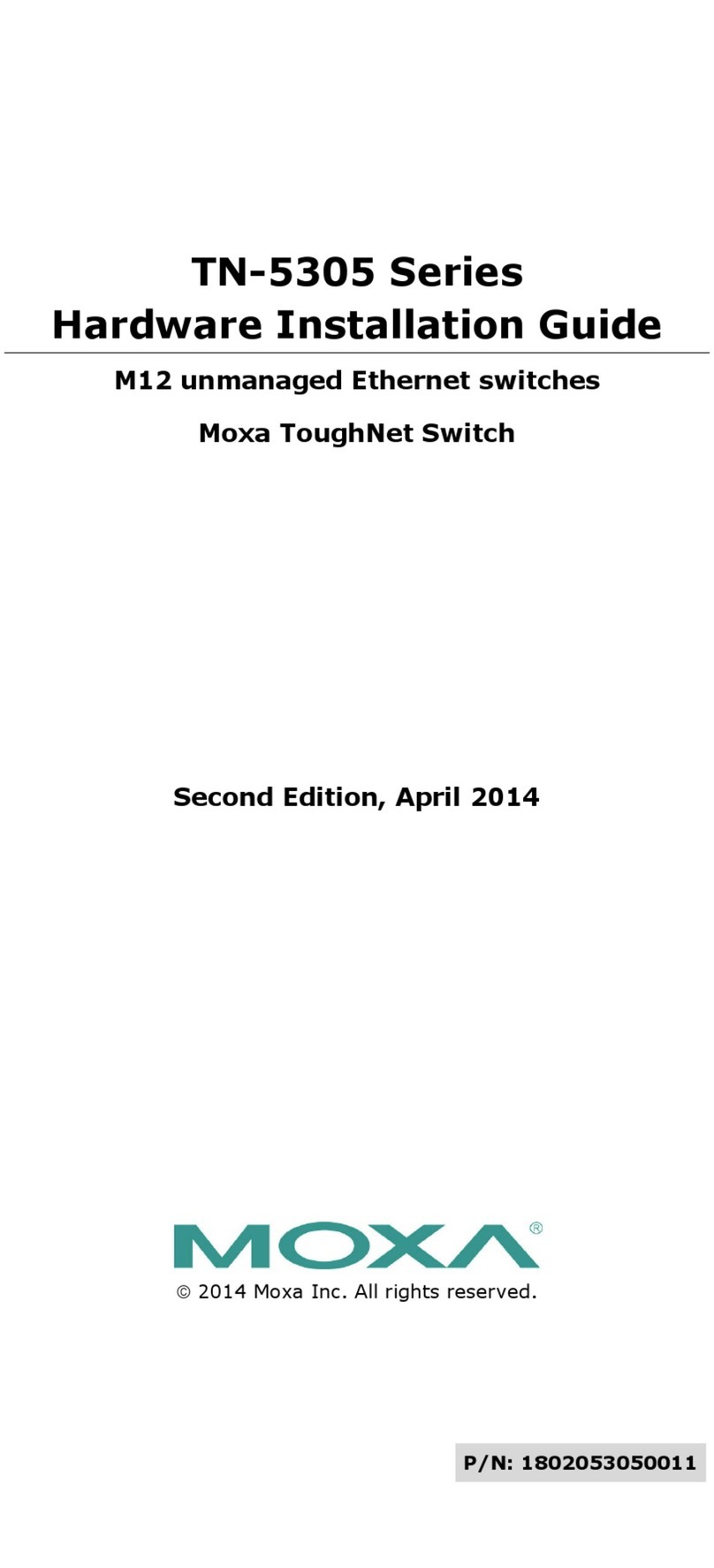
Moxa Technologies
Moxa Technologies TN-5305 Series Hardware installation guide
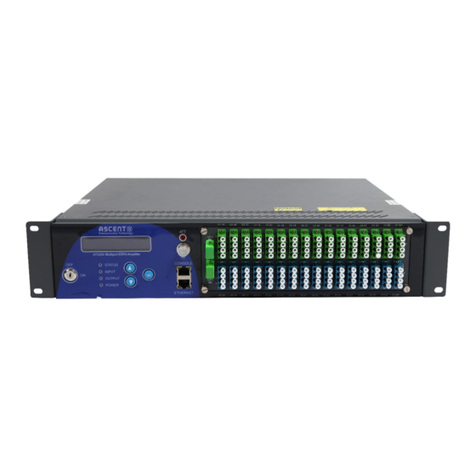
Ascent
Ascent AT5200 FTTX EDFA Quick reference guide

Edimax
Edimax ES-5160G+ install guide
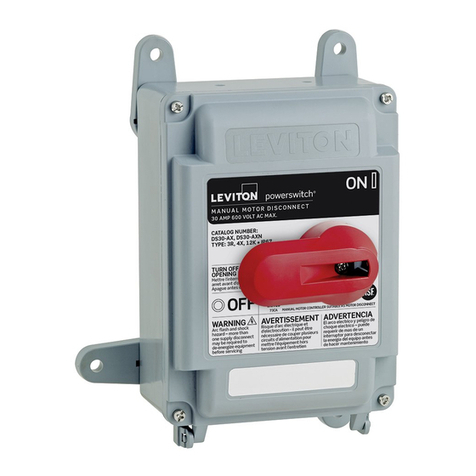
Leviton
Leviton PowerSwitch DS30-AX installation instructions
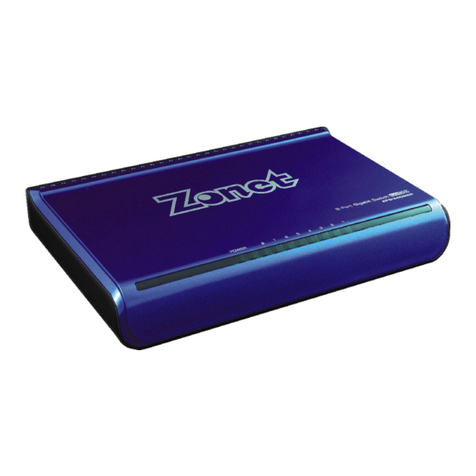
Zonet
Zonet ZFS3408EP Product data
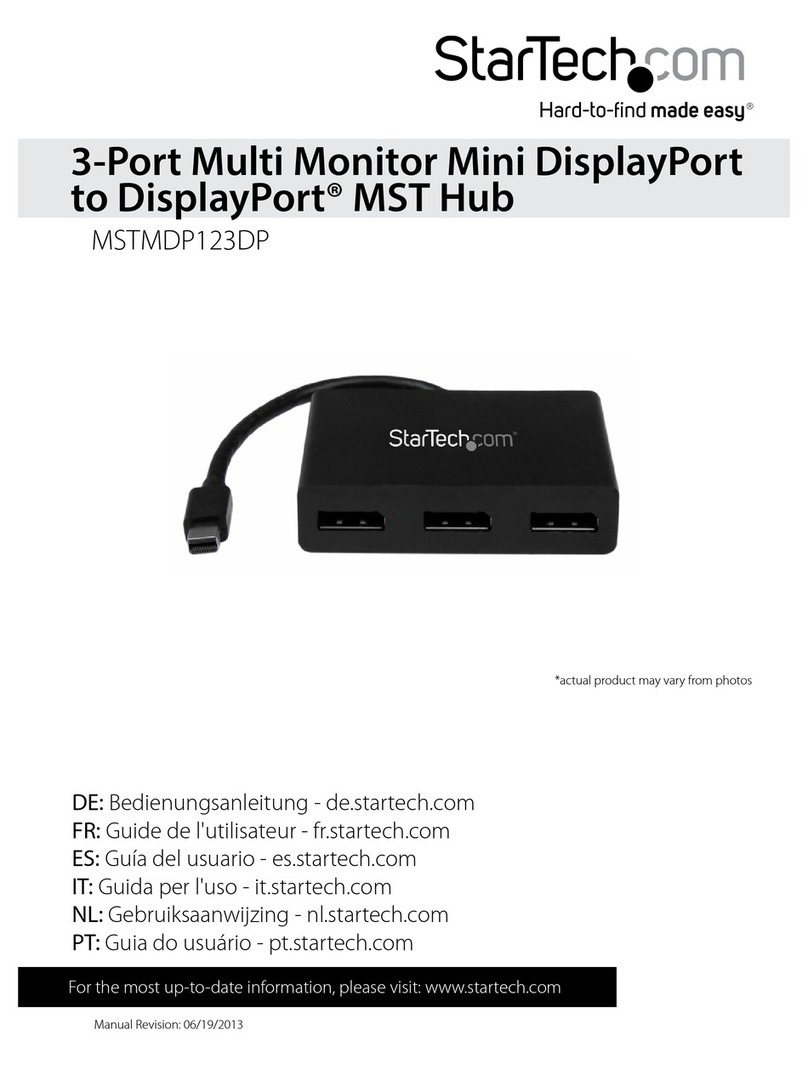
StarTech.com
StarTech.com MSTMDP123DP instruction manual
